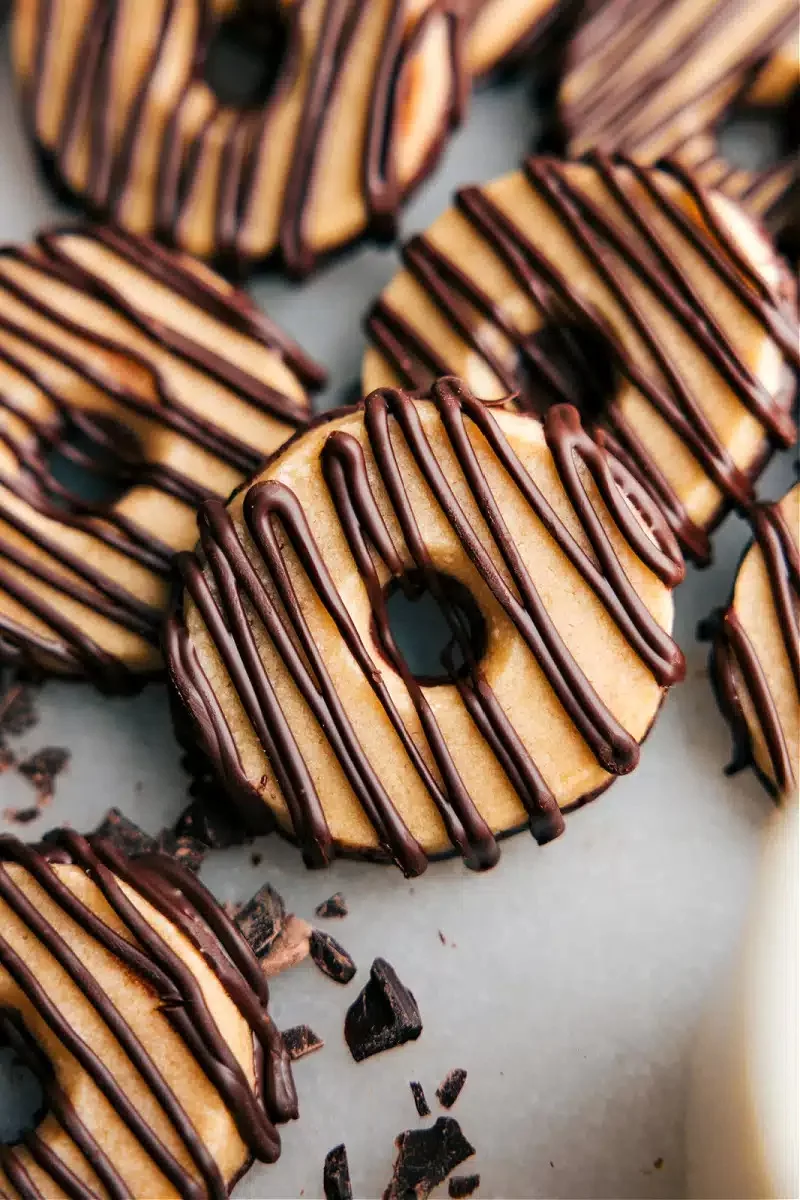These Fudge-Striped Cookies have a silky melted chocolate coating and are sweet and buttery to perfection. They are a sweet, fulfilling cookie with a hint of vanilla and the perfect amount of salt; it’s almost tough to stop at just one!
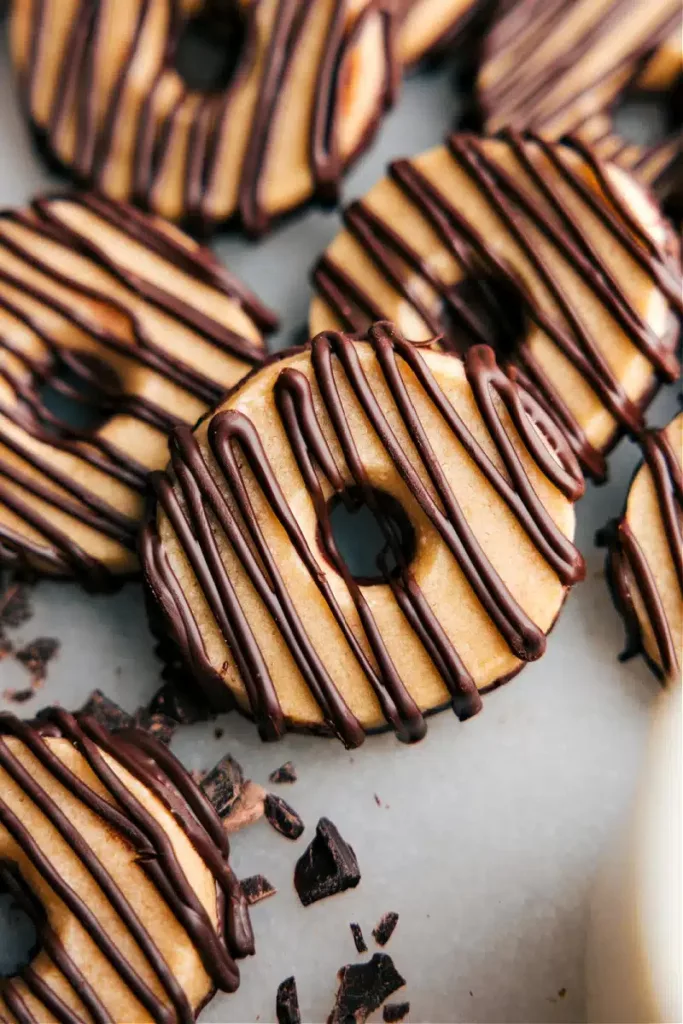
Fudge-Striped Cookies
There were two store-bought cookies that I used to love eating as a child. I was a huge fan of Keebler’s Fudge-Striped Cookies and Oreos. (Yes, things were different when Girl Scout Cookies were in season.) Even now, I still like these cookies. To be honest, I adore adding Oreos to different recipes since they just make everything better! Additionally, Fudge-Striped Cookies and Samoa Cookies are my top picks for S’mores during the summer. We use these cookies instead of the classic graham crackers! Is there anything better than a huge, roasted marshmallow sandwiched between two cookies with stripes of fudge?
We recently went camping, and after eating a good number of fudge-striped cookies, I decided to give baking my own a shot. Not only was it enjoyable to refine and test this recipe, but it was also shockingly simple to create delicious cookies! Moreover, specific cookie cutters are not needed! Rather than fumbling with two cookie cutters, we form the dough into a log and cut rounds out of it. It’s easy to remove the center with a pipe tip.
These Fudge-Striped Cookies combine sweet, creamy chocolate with delicious butter. They have a nice crunch and then a silky chocolate drizzle at the finish. To put it plainly, they’re delicious! Furthermore, this handmade version is far superior to the store-bought ones, even if they are still really tasty!
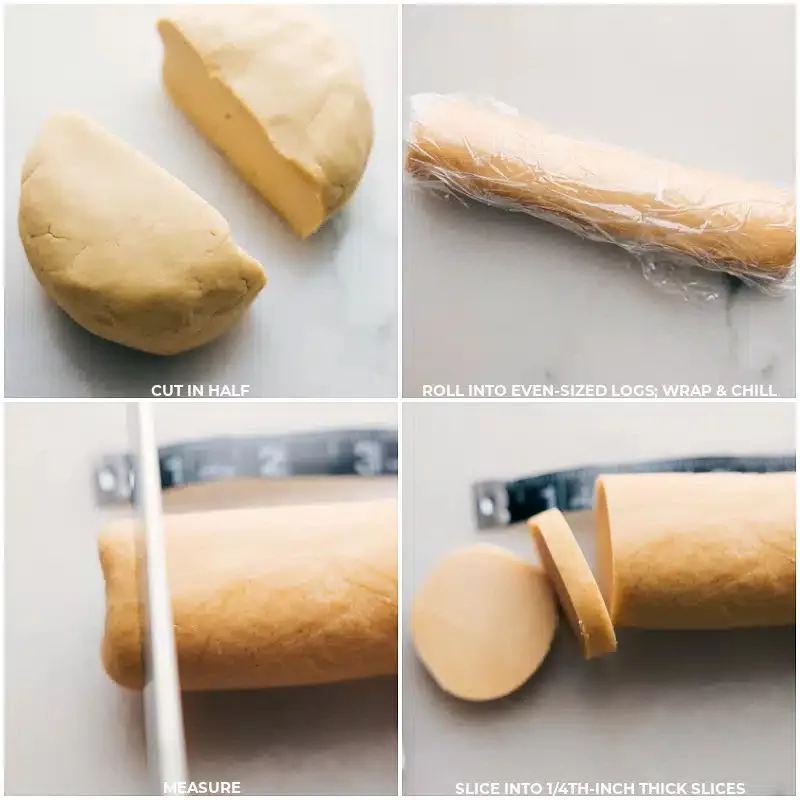
Fudge-Striped Cookie Ingredients
- Cold unsalted butter: Always go for cold, unsalted butter as it gives you more control over the amount of salt in your cookies. Additionally, cookies will not spread because of the cooled butter. Sugar can also dissolve as butter melts.
- Light brown sugar: Because of its moisture level, light brown sugar provides your cookies a chewy texture and a subtle molasses taste. It won’t cream into the butter if you use old, lumpy sugar; instead, use new, soft sugar.
- Pure vanilla extract: Vanilla extract gives your cookies a richer taste. Furthermore, the flavor of real vanilla extract is significantly superior than that of counterfeit.
- Sea salt, fine: Salt brings out the tastes of other foods. It also aids in bringing the sweetness into balance. The finer grains mix into the dough more uniformly.
- Cornstarch: Cornstarch adds additional tenderness to your cookies! It’s a really useful tool for getting a fantastic texture!
- This is the foundation for your cookies: white all-purpose flour. Be careful while measuring it; too little could cause the cookies to spread excessively, and too much might produce tough cookies.
- Semi-sweet chocolate chips: These chips give your fudge stripes a deep, rich chocolate taste. Because the taste will come through in the finished cookies, make careful to select a brand that you love eating just as is. Lack passion for semi-sweet chocolate? The benefit of making your own cookies is that you may replace it with milk or dark chocolate! For example, my kids don’t like semi-sweet foods, but when I make these cookies with milk chocolate.
- Plant-based oil: The oil smooths and eases the workability of the melted chocolate, thinning it for dipping and drizzling. Any oil with an unflavored taste will do.
Never forget to utilize premium components. They will have a big effect on the texture and flavor of your cookies!
QUICK TIP
Trademark Notice: Several trademarked brands are mentioned in this recipe, including Girl Scout Samoa Cookies, Keebler Fudge Striped Cookies, and Oreos. There are two reasons we use these names. We utilize these high-quality items in our test kitchens because: 1) they produce instantaneous name recognition to show recipe processes; and 2) they are easy to recognize. We value brands and trademarks!
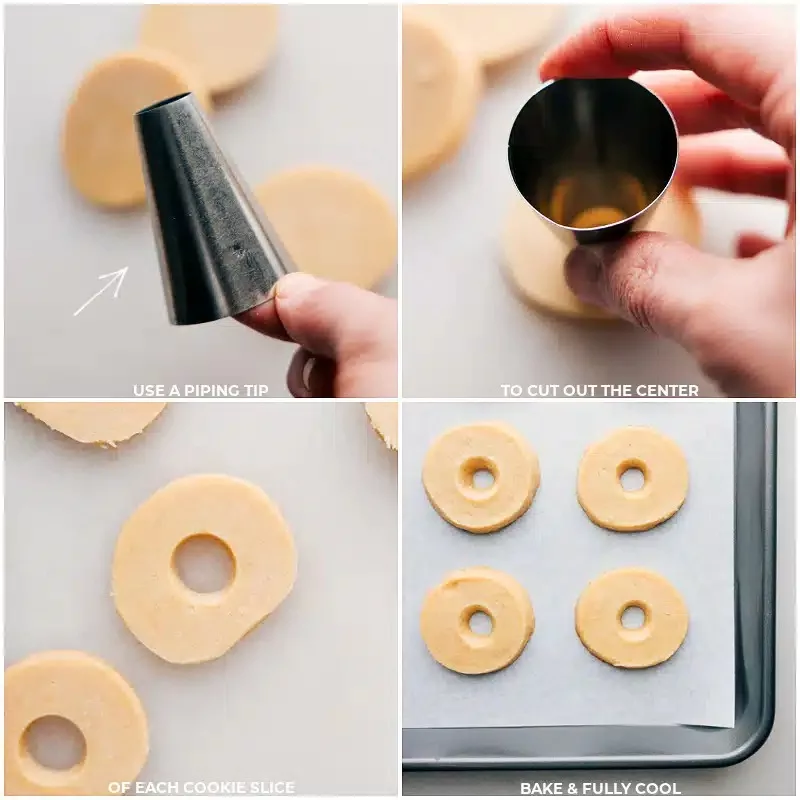
How To Cut Out The Center Of The Cookie
Most recipes for Fudge-striped cookies recommend using two separate cookie cutters. I prefer to use a more straightforward method, cutting the dough into rounds and using the top of a large round pipe tip to remove the center. This kit is a constant in my kitchen.
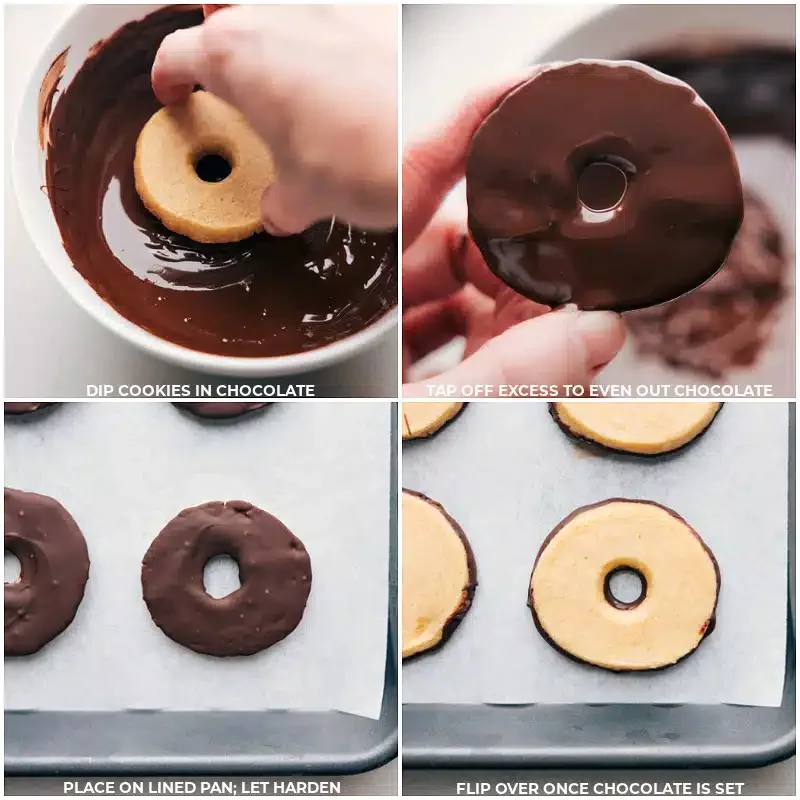
How To Make Fudge-Striped Cookies
- Butter temperature: The texture of your cookies is greatly influenced by the temperature of your butter. The cookies will keep their form and not spread too much thanks to the cold butter. It will guarantee the right texture as well.
- Calculating flour: Crumbled and dry cookies might result from over-measuring your flour. For the most exact measurement, make careful to level off the top of the measuring cup with the flat side of a table knife after spooning in the flour.
- Chilling the dough: Make sure you don’t omit this step! The flavors combine better and the cookies maintain their shape better when the dough is chilled before baking. Refrigerate the batter overnight for cookies with even more flavor!
- Even slices: Make an effort to slice the dough into as many identical pieces as you can as you cut it into cookies. All of your cookies will bake evenly if you do this.
- Keep an eye on the oven: Different ovens require different baking times. Watch your cookies carefully so they don’t overbake. When the edges begin to become golden, they are ready.
- Cooling: Before dipping the biscuits into the melted chocolate, let them cool fully. The chocolate might not set completely if the biscuits are too heated.
- Chocolate melting: To keep the chocolate from burning, melt it in the microwave in small bursts while stirring constantly.
- Drizzling and dipping: To get a clean finish, let the excess chocolate drop off the cookies after they have been dipped in it. If you don’t have a piping bag, a zipper-top plastic bag with the corner snipped off works equally well for the drizzle.
- Setting the chocolate: Before presenting the cookies, let the chocolate to completely solidify. If you store the cookies in the freezer or refrigerator, this procedure will go more quickly.
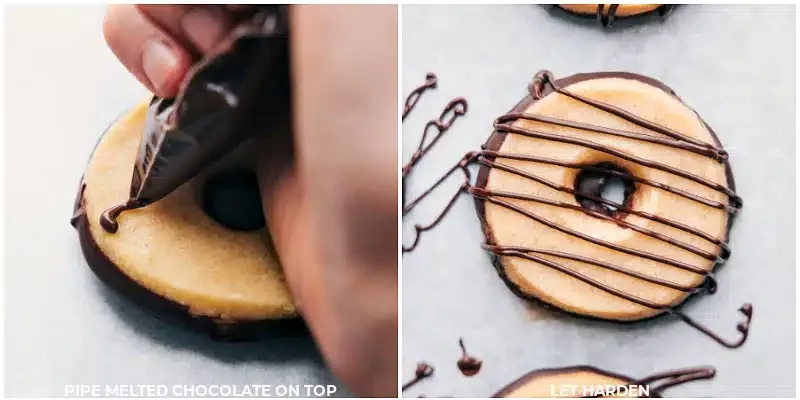
Why COLD Butter?
These Fudge-Striped Cookies require cold butter because it helps keep the cookies from spreading too much as they bake. It takes longer for cold butter to melt in a hot oven than it does at room temperature. This additional time helps the cookies keep their form by allowing them to set in the oven’s heat before the butter completely melts.
As the sugar crystals cut into the cold butter when creamed with brown sugar, air pockets are also formed. Because the air pockets added during creaming will expand in the oven and contribute to the lift and final texture of the cookie, this procedure is sometimes referred to as “mechanical leavening.”
Furthermore, blending cold butter and sugar together facilitates the blending of these two components. This is crucial because it improves the texture and flavor of the final cookies by distributing the flavor of the sugar equally throughout the dough. You might get cookies with uneven textures or parts that are too sweet if the creaming process isn’t done correctly.
QUICK TIP
Why not make cubes out of the cold butter? more quickly and easily creaming! Cutting the butter into tiny pieces facilitates a quicker and more effective creaming process, which involves beating together butter and sugar. It may be more difficult to break up and mix large lumps of butter with the sugar.
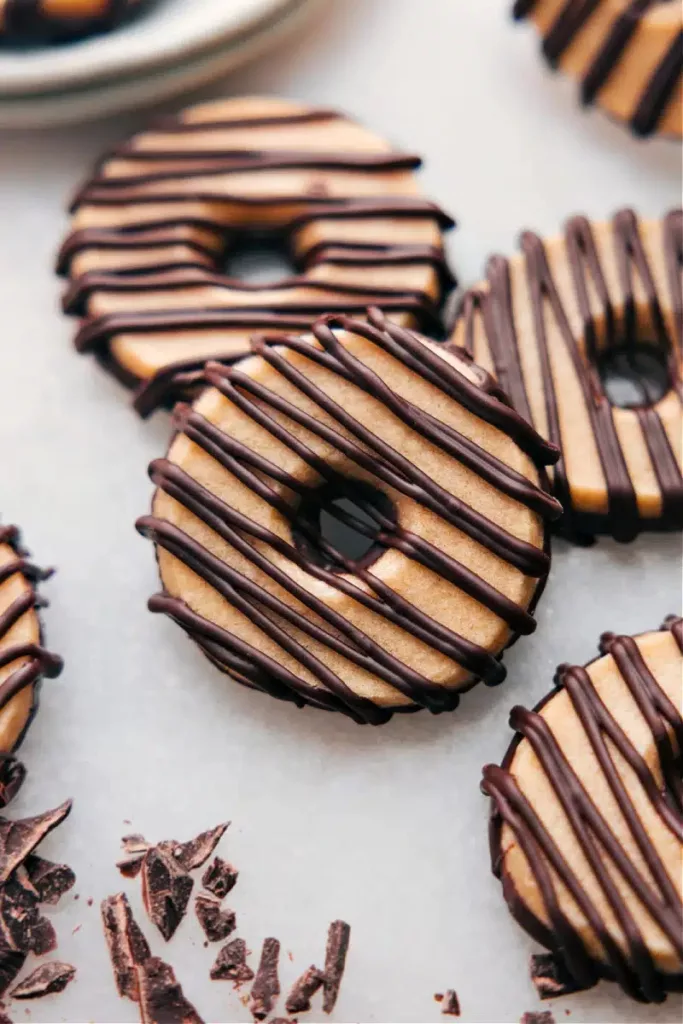
STORAGE
- Cool fully: To avoid sogginess, store cookies only after they have cooled completely. To keep cookies fresh, store them in sealed plastic containers or resealable plastic bags.
- Room temperature: Cookies may be stored at room temperature for two to three days without going bad.
- Freezing: For extended storage, you may freeze the unbaked dough as well as the baked cookies. Line an airtight container with parchment paper layers of cooked cookies. Alternatively, freeze the dough in sheet pan slices, then move them and store them in freezer bags. To bake frozen dough immediately and enjoy, simply extend the baking time by a few minutes.
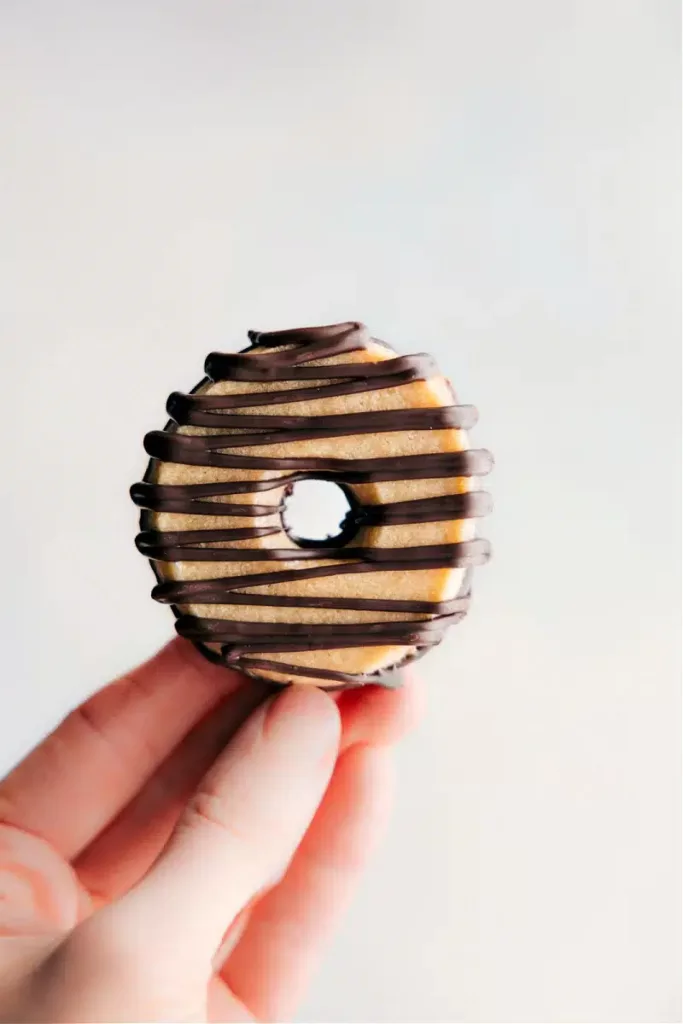
More Recipes You Might Like
INGREDIENTS
- 1 cup (16 tbsp) cold unsalted butter, cut into small cubes
- ¾ cup soft light brown sugar packed gently
- 1½ teaspoons pure vanilla extract
- a heaping 1/2 teaspoon fine sea salt
- 1 teaspoon cornstarch
- 2¼ cups white all-purpose flour (Note 1)
- 2 cups chocolate chips, separated (Note 2)
- 4 teaspoons vegetable oil, separated
- Large piping tip or this one (to cut out centers)
INSTRUCTIONS
- CREAM BUTTER: Using a paddle attachment on an electric or stand mixer, whip together the butter and brown sugar until the mixture is creamy and resembles peanut butter. This ought to need three to five minutes. When necessary, scrape down the bowl’s sides.
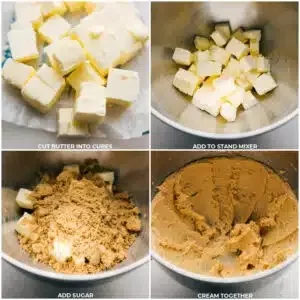
- FINISH DOUGH: Stir in cornstarch, salt, and vanilla extract. Beat until barely incorporated. Next, stir in the flour just until combined, being careful not to overmix. After some combining and kneading, the dough will come together even if it initially appears a little crumbly.
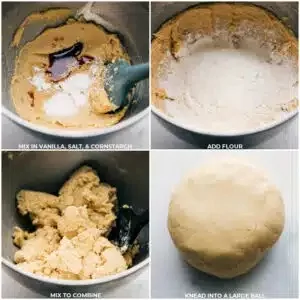
- CHILL DOUGH: Roll the dough into a single, big ball and then cut in two. Form each part into a log that measures approximately 2 inches in diameter and 9 inches in length. To help it level out, roll it over the counter. For at least two hours, chill each log in the refrigerator after securely wrapping it in plastic wrap.

- SLICE COOKIES: Set oven temperature to 350 degrees Fahrenheit. Use silicone liners or parchment paper to line a baking sheet. Remove each dough log from the refrigerator one at a time, and cut each log into thin, 1/4-inch-thick cookies. Cut off the center with the tip of a pipe tip. Arrange the cookies one inch apart on the baking sheet that has been prepared.

- BAKE: Bake for 8 to 12 minutes, or until the sides are just beginning to turn golden brown. In order to avoid overbaking them, be careful to monitor them closely.
- COOL: Take the cookies out of the oven and place them on a wire rack to cool. Allow them to cool fully. Proceed with the remaining dough.
- CHOCOLATE DIP: Put 1 cup chocolate chips and 2 tsp vegetable oil in a basin that is safe to microwave. Once the chocolate is melted and smooth, microwave it for 20-second bursts, stirring for 15 seconds in between. Each cooled cookie’s bottom half should be dipped into the melted chocolate. To smooth out the chocolate and allow any excess to fall off, tap the cookie against the bowl’s edge. On a sheet pan with sides lined, arrange the dipped cookie, chocolate side up. Allow chocolate to solidify completely; if you want it to set up faster, place it in the freezer or fridge. All of the cookie bases should be dipped.
(Melt remaining 1 cup chocolate chips and remaining 2 teaspoons vegetable oil as needed. Re-warm chocolate as needed in short microwave bursts.)
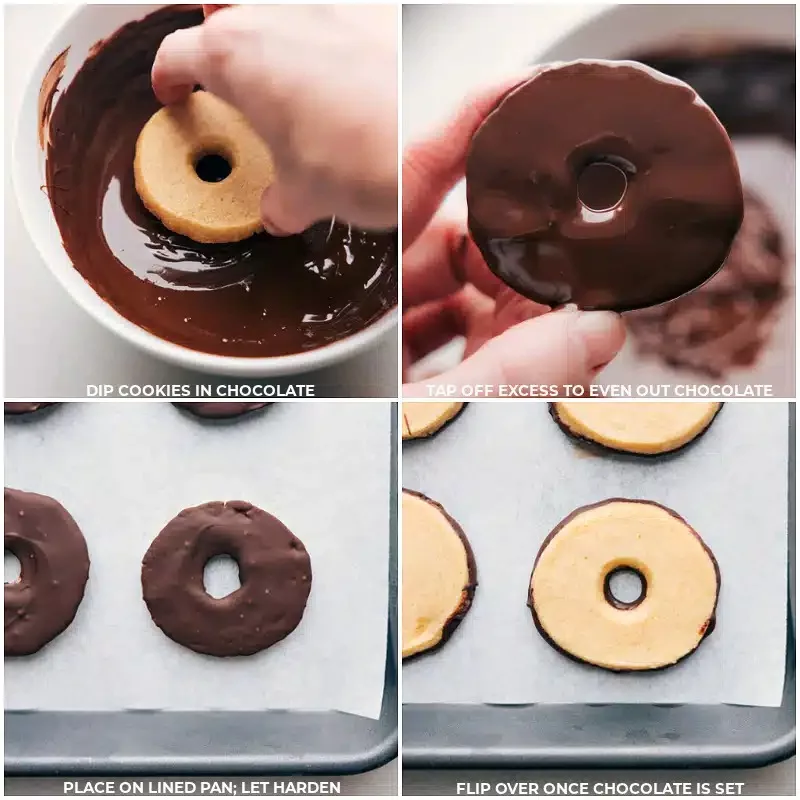
- CHOCOLATE DRIZZLE: Insert a plastic bag with a zipper top into a tall cup. Any leftover chocolate may be transferred with a spatula to the plastic bag, sealed tightly to prevent air from escaping, the tip cut off, and drizzled over the opposite side of the cookies. Before serving, let the chocolate sit at room temperature (so they don’t become cold!).

RECIPE NOTES
First note on flour: If you measure it too much, your cookies will be crumbly and dry, and if you measure it too little, they will spread and become mushy. For the most precise measurement, make sure you use the flat side of a table knife to level off the top of the measuring cup. Alternatively, in the best case scenario, weigh the flour (325 grams) using a household food scale.
Note 2: Chocolate Chips: Whenever possible, choose the best chocolate chips available. Not only does quality impact melt time, but flavor—the main attraction in these cookies—is also impacted. Milk chocolate is our family’s favorite, but semi-sweet or dark chocolate make great substitutes if you’re worried about the sweetness of the cookies. Choose the chocolate that you enjoy the best! For a different take, consider experimenting with white chocolate.
